With everyone spending a little more time at home these days, there’s never been a better time to invest in a great TV. The ability to stream high quality film and TV in your living room is the easiest it’s ever been. So why not have the best viewing experience you can? With new technology constantly emerging it can be hard to keep up, so let us help with the lingo so you can make a confident choice.
LCD vs LED
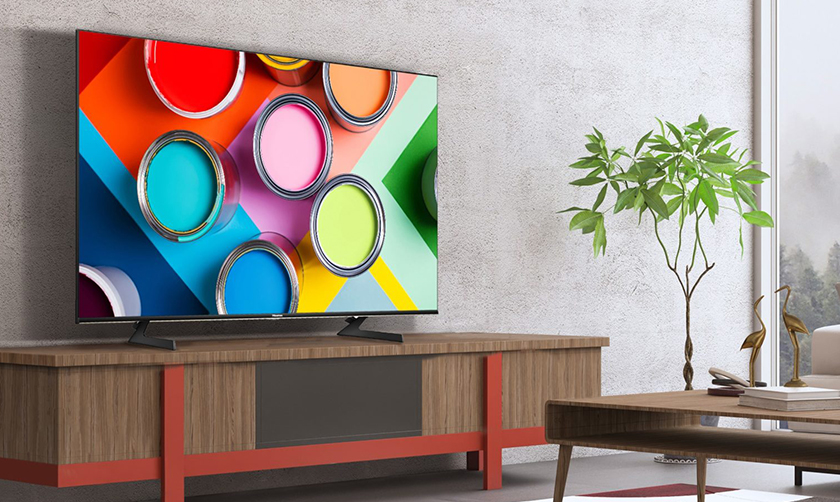
Liquid Crystal Display (LCD) TVs are made from a matrix of tiny, coloured liquid crystal cells. These were originally backlit with fluorescent tubes and signals controlled the amount of colour that came through each cell. Light-Emitting Diode (LED) TVs use mostly the same technology with one important difference. Where older LCD TVs had only a handful of fluorescent backlights, LED TVs have hundreds (sometimes thousands) of tiny LEDs instead.
There are two types of LED backlighting: edge lighting and full-array. In edge lit TVs, the LEDs are placed around the edge of the screen, allowing for the TV to be made thinner and at a lower cost. The alternative is full-array backlighting where the LEDs are placed evenly across the entire screen and can be locally dimmed in different zones. This typically leads to superior picture quality due to high contrasts between light and dark.
QLED vs OLED
In Quantum LED (QLED) TVs a layer of miniscule dots is placed in front of the backlight to help produce more vibrant colours and brighter images. These dots are made from phosphor particles that glow when light shines on them. This enhances the LEDs and helps to reduce their natural blue light making whites appear whiter.
Organic LED (OLED) TVs replace the dots with individual organic cells that emit their own light. They are also unique in the way that each individual pixel can be completely switched off allowing for true blacks, deeper contrast and overall better image quality. OLED TVs are also known for their smooth motion with very little blurring and a wide viewing angle making the overall watching experience more pleasant. Additionally, without the need for large backlights, OLED TVs can be made incredibly thin for a more aesthetic and modern look.
4K vs 8K
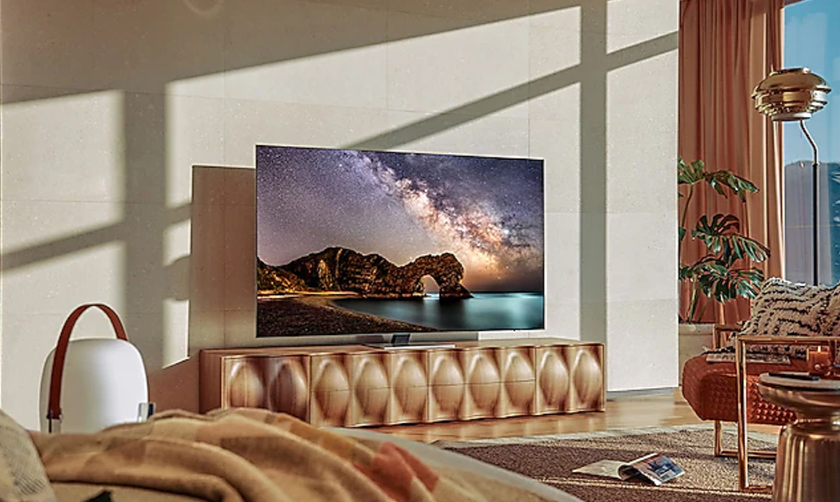
Prior to the release of 4K TVs in 2012, Full HD was the standard with a 1920 x 1080 resolution. These days 4K is the standard for medium to large screens. 4K provides four times the amount of pixels as a Full HD TV, with a resolution of 3840 x 2160 allowing for more life-like, higher quality images. The sharper detail picture (especially on small objects and text) also allows you to comfortably view the screen from a shorter distance.
In turn, 8K TVs then have four times the amount of pixels as 4K, bringing the screen resolution up to 7680 x 4320. The image quality on 8K TVs is incredibly crisp and is especially noticeable on larger screens. As 8K is still a new technology, 8K content isn’t as readily available as 4K but is absolutely on its way. In the meantime, TVs with 8K Quantum Processors can optimise 4K content by sharpening the image and reducing noise and texture based on other 8K footage on its database. The future of image quality lies with 8K and if you’re wanting to set yourself up for many years to come we have you covered.
HDR
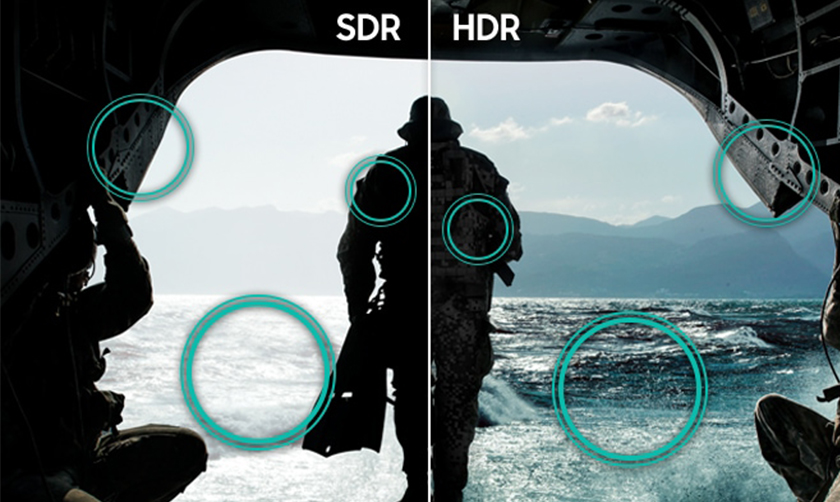
High Dynamic Range (HDR) is a feature that will improve picture quality, making it appear brighter and more detailed. It will also help to enhance the vibrancy of colours and make them pop. Popular HDR standards to look for in your new TV purchase are HDR10, HDR10+, HLG and Dolby Vision. These video standards are now available using ultra definition blu ray disc, Netflix and gaming consoles.
Screen Size
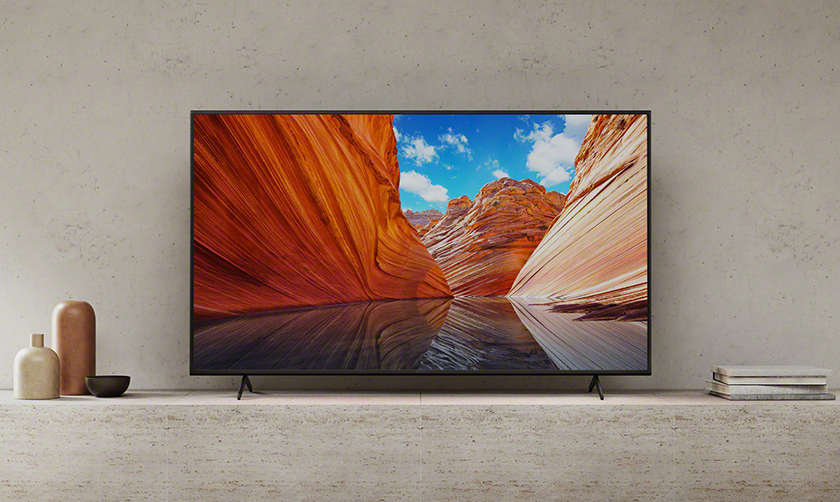
To determine which size TV to purchase you should consider the room itself. For optimal viewing of a 4K TV it is recommended to sit at a distance 1.5x the height of the screen. Keeping that in mind, select the largest size that will fit in your space and within your budget. If you’re still not sure, pop in store and take a look at the different options yourself. One of our friendly team members will be able to help if needed!
Projectors
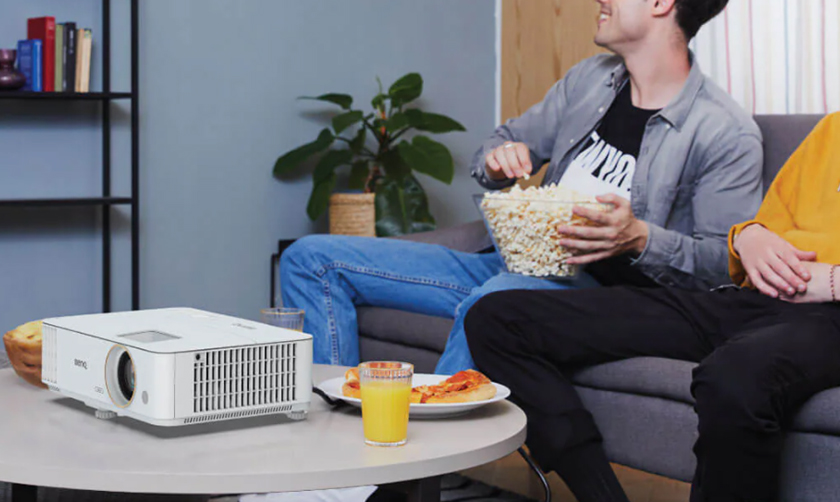
With the ability to project from an 80” to 130” image for a reasonable price many people are replacing large screen TVs with projectors in their home theatres. As your projector choice will be dependent on the room your set up is in, here are a few factors to consider during your search. Lumens describes how much light a projector can produce and therefore, determines how bright the image is and how large you can make it.
To simplify: the higher the number, the brighter the image. We would generally recommend between 1500 and 3000 lumens for a home theatre set up. Your choice will be determined by the amount of ambient light or controlled lighting in your room.
Throw refers to the distance the projector is from the wall or screen you are viewing the picture on. With three options: long throw, short throw and ultra-short throw, it is best to consider the size and layout of your room. Long throw projectors can be ceiling mounted and are able to produce very large images. They are most suitable in a large room and can be positioned 3 meters to 7 meters from the surface you intend to project on. Short throw projectors are better for smaller rooms and, while can also be ceiling mounted, need to be closer to the surface, around 1 to 2.5m. Ultra-short throw projectors in comparison only need to be 0 to 0.5m away. It is recommended that ultra-short throw projectors are positioned on a tabletop near the projection surface.


